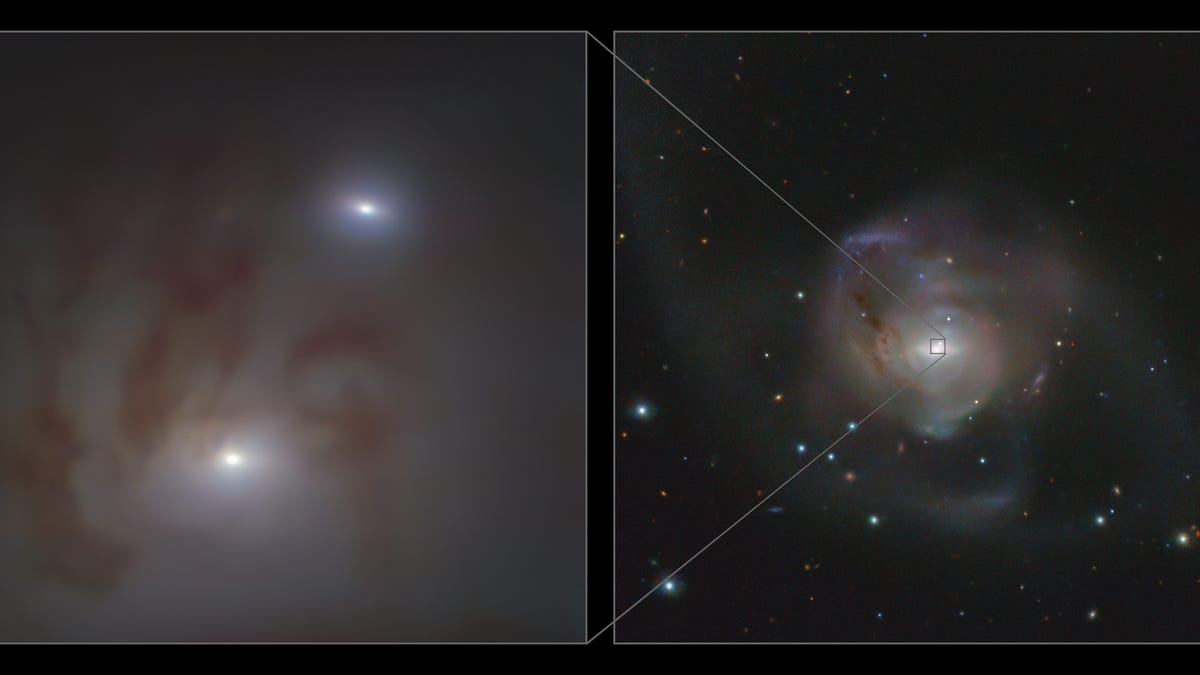
While the galaxy is visible through a normal telescope, when seen through the European Southern Observatory’s Very Large Telescope one can make out little orbs of light within the galaxy that mark where the black holes are. (The gravitational pull of black holes is so strong that light famously cannot escape from them, but the objects are often surrounded by superheated plasma that glows brightly.)
Advertisement
“The small separation and velocity of the two black holes indicate that they will merge into one monster black hole,” said study author Holger Baumgardt, an astrophysicist at the University of Queensland, Australia, in an ESO release.
Black hole astronomy is about to get a boost, as the ESO’s Very Large Telescope is set to be succeeded by the Extremely Large Telescope by the end of the decade. The new telescope will sit high in Chile’s Atacama Desert, an attractive spot for astronomers for its altitude, clear skies, and lack of light pollution.
Advertisement
“This detection of a supermassive black hole pair is just the beginning,” said co-author Steffen Mieske, an astronomer at ESO in Chile, in the same release. “We will be able to make detections like this considerably further than currently possible. ESO’s ELT will be integral to understanding these objects.”
Modern gravitational wave observatories are able to detect the ripples in space-time created by collisions of black holes as well as black holes and neutron stars. But we probably won’t get a chance to see this pair finally embrace, since the researchers’ best guess for their merger date is simply “within the next 250 million years,” according to Baumgardt.
Advertisement
This article has been updated to include comments from Karina Voggel.
More: Physicists See Light Echoing From Behind a Black Hole for the First Time
Advertisement